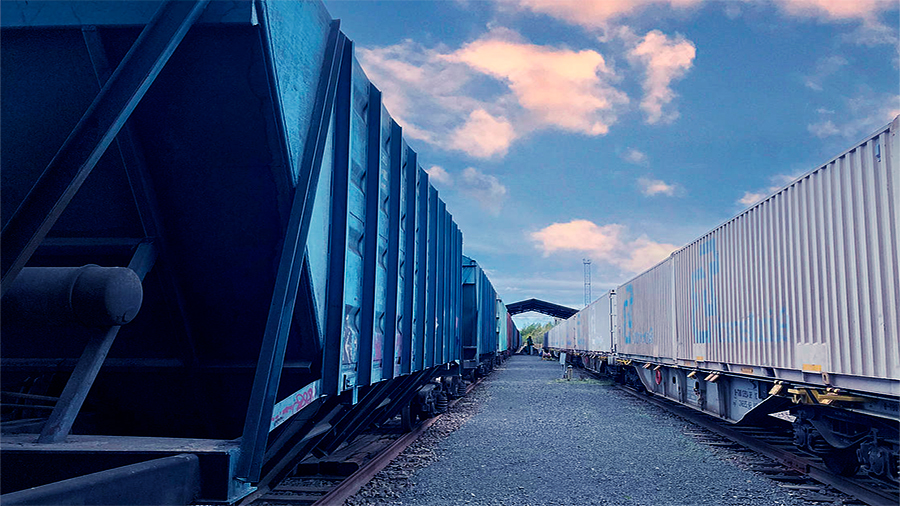PPP and Loans: Models for Financing Transport Corridors
Building and maintaining transport corridors is expensive. Highways, ports, and cross-border rail links demand billions in upfront spending, years of construction, and long payback horizons. Few governments can carry the entire burden alone, and private investors rarely risk so much without security. This is where financing models like public-private partnerships (PPPs) and syndicated loans step in. They pool resources, spread risk, and create structures that make large-scale projects possible. Understanding how these models work shows why they dominate today’s global infrastructure landscape.
Why Transport Corridors Need Complex Financing
Transport corridors are not simple projects. They cross regions, connect multiple economies, and require long-term commitments. Costs are high, ranging from land acquisition to construction, maintenance, and security. Traditional state budgets struggle to allocate so much capital while balancing healthcare, education, and other priorities. For private firms, the scale of these projects is daunting without external guarantees. Loans and PPPs fill the gap, combining government stability with private sector efficiency. This blend makes corridors financially viable and politically acceptable, while ensuring investors see returns over decades rather than months.
Cross-border nature
Transport corridors often involve multiple governments, requiring shared responsibility for financing and regulation.
Capital intensity
Projects can cost tens of billions, making traditional single-lender or state-only funding impractical.

PPP Models in Transport Corridor Financing
Public-private partnerships (PPPs) are contracts where governments and private companies share the risks and rewards of building and operating infrastructure. For corridors, this often means private investors fund part of the construction in exchange for toll revenues, concession rights, or guaranteed payments. Governments benefit by shifting some financial weight to private partners while ensuring the corridor is delivered on time. Investors gain steady, long-term returns. PPPs vary in form, from design-build-operate contracts to joint ownership arrangements, but all balance responsibility between public and private players.
| PPP Model | Public Role | Private Role |
|---|---|---|
| Build-Operate-Transfer (BOT) | Provides land, regulatory support | Finances and manages operations until transfer |
| Concession | Sets framework, monitors compliance | Invests and collects user fees for set period |
| Joint Venture | Shares ownership and risk | Co-invests, often with management control |
Well-known examples include toll highways in Europe financed by consortia of firms and governments, or African port expansions supported by private operators in exchange for management rights. Each case shows how PPPs align public goals with private incentives.
Syndicated Loans as Financing Tools
Syndicated loans are another cornerstone of transport financing. No single bank is willing to shoulder the risk of multi-billion-dollar corridors, so a group of lenders comes together to spread exposure. One bank acts as the lead arranger, structuring the loan and inviting others to join. This allows massive projects to access funding at manageable rates. For governments and private developers, syndicated loans provide credibility and liquidity. For banks, they reduce individual exposure while still tapping into profitable, long-term deals tied to critical infrastructure.
| Feature | Benefit |
|---|---|
| Risk Sharing | Spreads exposure across multiple lenders |
| Liquidity | Unlocks large amounts of capital otherwise unavailable |
| Credibility | Signals broad financial support for project stability |
Syndicated loans are common in Asia, where cross-border railways and port facilities require sums beyond the capacity of single institutions. By sharing responsibility, banks and investors keep projects moving forward while keeping risks balanced.
Case Examples of Corridor Financing
In India, PPP models have driven the Golden Quadrilateral highway network, linking major cities with private firms investing alongside state agencies. Toll revenues fund loan repayments while ensuring investors see returns. In East Africa, port expansions in Kenya and Tanzania used PPP frameworks with foreign operators financing construction in exchange for operating concessions. On the lending side, Europe’s transnational rail corridors are often backed by syndicated loans led by large banks, joined by regional lenders. Each project shows the mix of models: PPPs align incentives, while syndicated loans provide the cash flow needed to begin construction at scale.
Balancing incentives
PPP contracts guarantee project delivery while allowing investors to profit from long-term operation.
International cooperation
Syndicated loans pull together global lenders, ensuring that no single bank carries overwhelming risk.

Belt and Road Corridors
China’s Belt and Road Initiative (BRI) provides one of the most visible examples of how PPPs and loans shape transport corridors. Projects like the China-Pakistan Economic Corridor combine state-backed financing with private participation, blending sovereign loans with infrastructure concessions. Rail lines, highways, and energy networks along the route have been funded through syndicated loans led by Chinese state banks, joined by international partners. PPP structures ensure that local governments share responsibility, while investors gain predictable returns through tolls, transit fees, or long-term contracts. While the BRI has accelerated connectivity, it has also revealed risks: debt sustainability issues in partner countries and concerns about overreliance on foreign lenders. Still, the initiative highlights how powerful PPP and loan models are in turning geopolitical visions into physical infrastructure.
Europe’s TEN-T Corridors
The Trans-European Transport Network (TEN-T) provides another strong example. Stretching across the continent, it includes rail, road, and port corridors designed to unify EU trade routes. Financing relies heavily on PPP models paired with syndicated loans. For example, cross-border high-speed rail links between France and Spain were backed by EU funds but also involved private concessionaires handling operations and collecting revenues. Large banks from Germany, France, and Italy participated in syndicated loans to spread costs. The result has been improved regional integration, but also lessons about aligning repayment terms with the slower cash flows of transport projects. TEN-T demonstrates how Europe uses shared financing models to manage scale and complexity in long-term infrastructure planning.
Latin America’s Pacific Corridor
Latin America offers another angle through the Pacific Corridor initiative, connecting Mexico with Central America and beyond. The project aimed to modernize highways and ports to improve regional trade and access to global markets. Financing blended PPP concessions, where private firms took responsibility for sections of highway upgrades, with syndicated loans provided by a mix of local banks and international institutions like the Inter-American Development Bank. In Guatemala and Honduras, concessionaires collected tolls under long-term contracts, while syndicated loans funded port expansions. The corridor has boosted trade flows but also revealed risks: political instability sometimes delayed repayments, and fluctuating traffic volumes complicated revenue forecasts. Still, the Pacific Corridor illustrates how hybrid financing models make large-scale regional connectivity possible in emerging economies.
Conclusion
Financing transport corridors is never simple. The scale, complexity, and time horizons demand solutions beyond traditional state budgets or single-bank loans. PPPs create partnerships where governments and private firms share risk and reward, while syndicated loans unlock the capital pools needed to build. Together, these models ensure that highways, ports, and rail lines linking nations become reality. The Belt and Road Initiative, Europe’s TEN-T corridors, and Latin America’s Pacific Corridor show three different approaches, but all highlight the necessity of cooperation between states, private investors, and lenders. The key is balance—structuring agreements so that costs, risks, and benefits are shared fairly. Without these financing models, many of today’s transport corridors would remain plans on paper rather than arteries of global trade.

